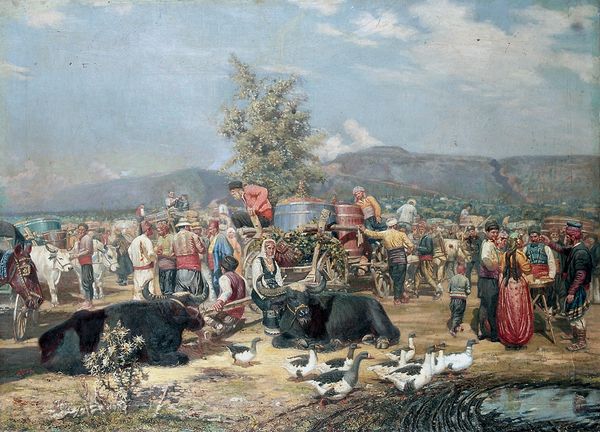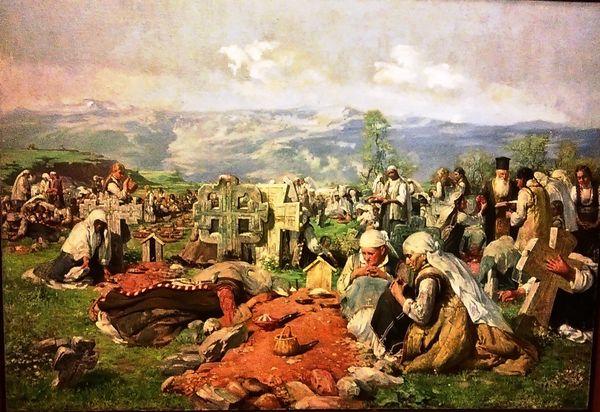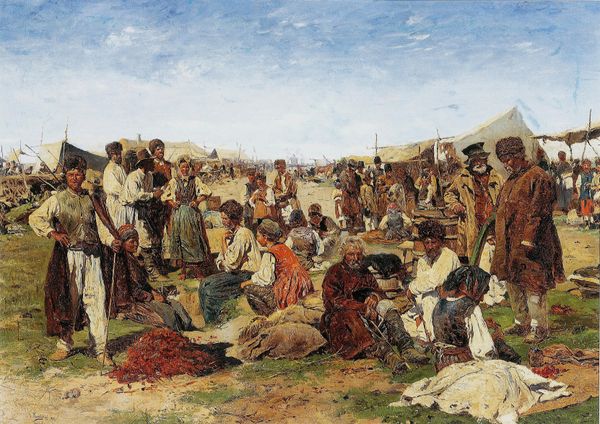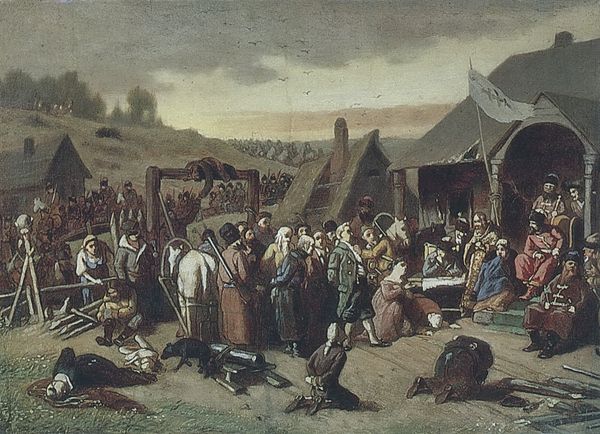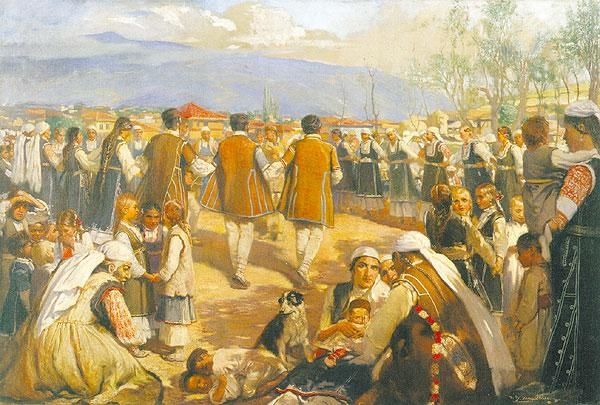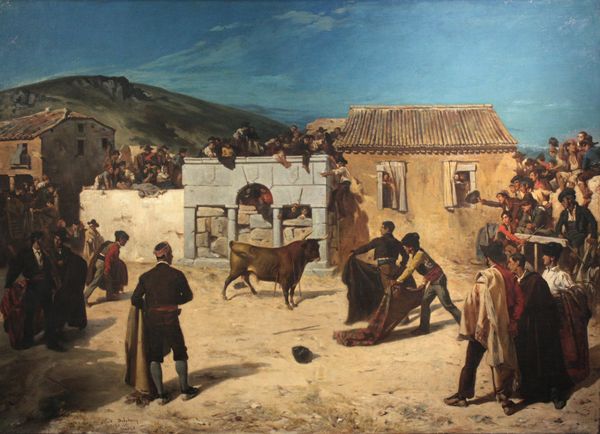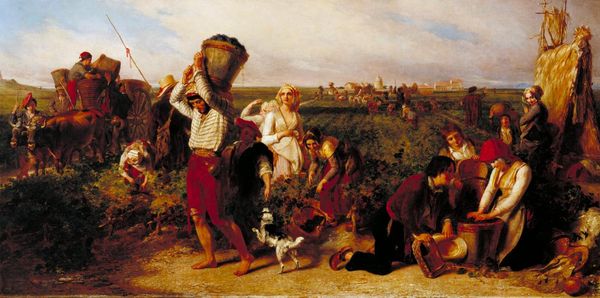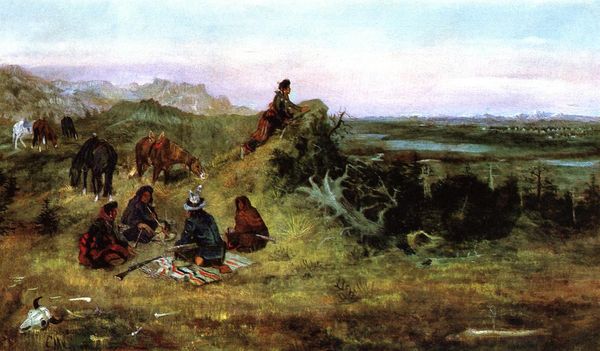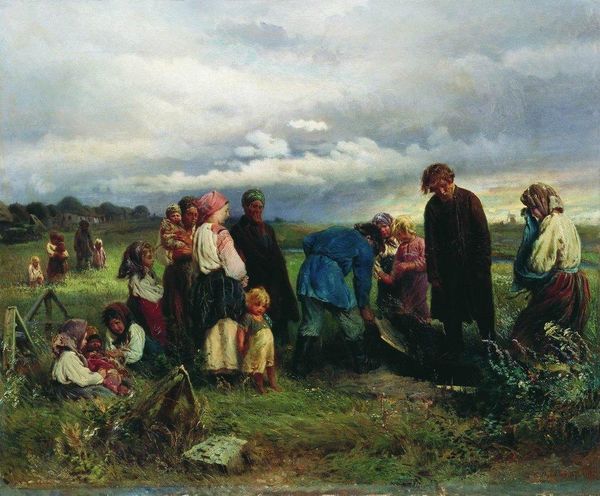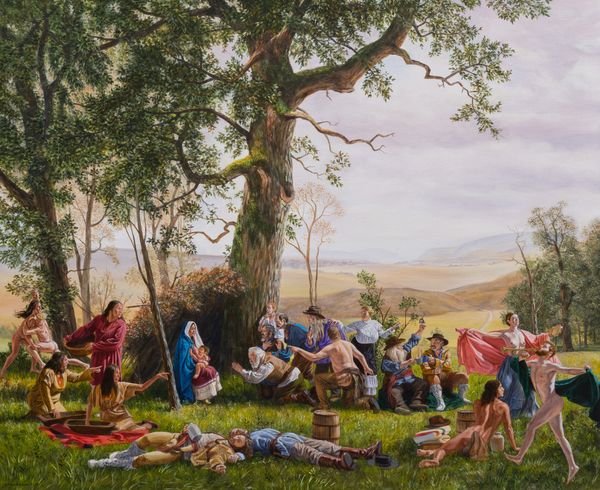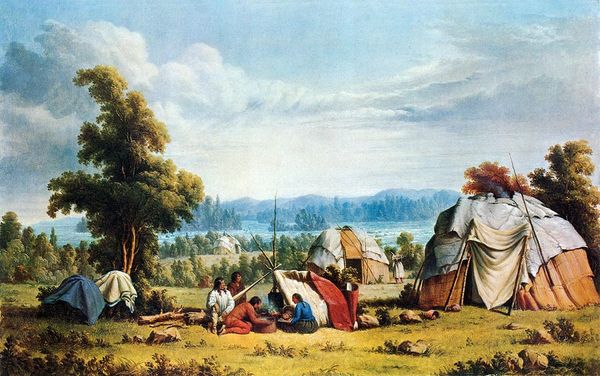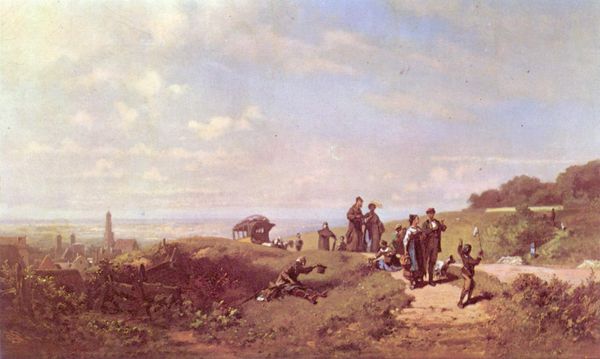
painting, oil-paint
#
portrait
#
painting
#
oil-paint
#
landscape
#
oil painting
#
group-portraits
#
genre-painting
#
academic-art
#
realism
Copyright: Public domain
Curator: Let's spend some time with Ivan Mrkvička's "Zadushnitsa" from 1890. It’s an oil painting capturing a very specific cultural tradition. Editor: My first impression is how poignant it is. There's a somber yet somehow communal atmosphere radiating from the canvas. The scale feels significant too, almost like a staged tableau vivant. Curator: Indeed. The title, "Zadushnitsa," refers to a day of remembrance for the dead in Eastern Orthodox traditions. Mrkvička painted this scene depicting precisely that, highlighting both the public performance of grief and private moments of mourning within the community. You can really see that duality present. Editor: Absolutely. Looking at the materials—the oil paint itself—the artist masterfully uses it to differentiate textures: the rough-hewn stone of the crosses, the softer fabrics of the mourners’ clothes, and even the varied surfaces of the offerings they've brought. All are rendered with attention. It raises questions about labor too—who produced these materials, both the art supplies and the grave goods? Curator: And how such customs are perpetuated. It is also fascinating to consider Mrkvička's own position within this social landscape. A Czech painter portraying a South Slavic custom, navigating his own identity within the Austro-Hungarian Empire…it speaks volumes about the flow of cultural exchange and the gaze inherent in representation. The artistic academy very much expected this type of work. Editor: It is all there, in plain sight, or not so plain. Consider those crosses. The carvings have a very tangible quality. And what is offered? Small goods, small gestures accumulated, massed for one to remember a loss, the process itself the means and not the painting. It’s fascinating how the artistic traditions of Realism merge with deeply rooted social practices to commemorate and perhaps subtly critique. Curator: Mrkvička gives us access to reflect on how communities process mortality collectively, on public expressions of grief, and of course what informs that. It brings us face to face with ourselves in many ways. Editor: Exactly. Thinking about this painting in terms of production and consumption changes how one views the scene presented before us. It makes one stop to think about every component's purpose and material worth as one moves through this work of art.
Comments
No comments
Be the first to comment and join the conversation on the ultimate creative platform.
